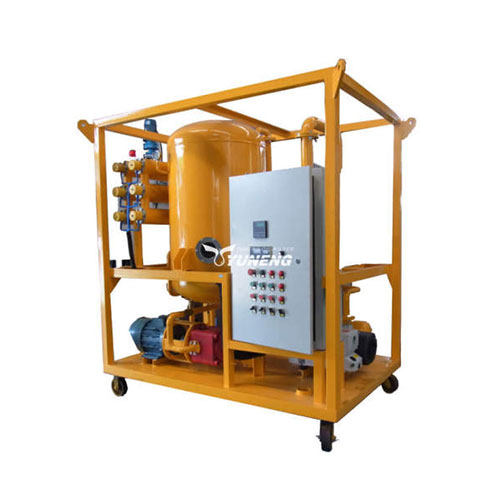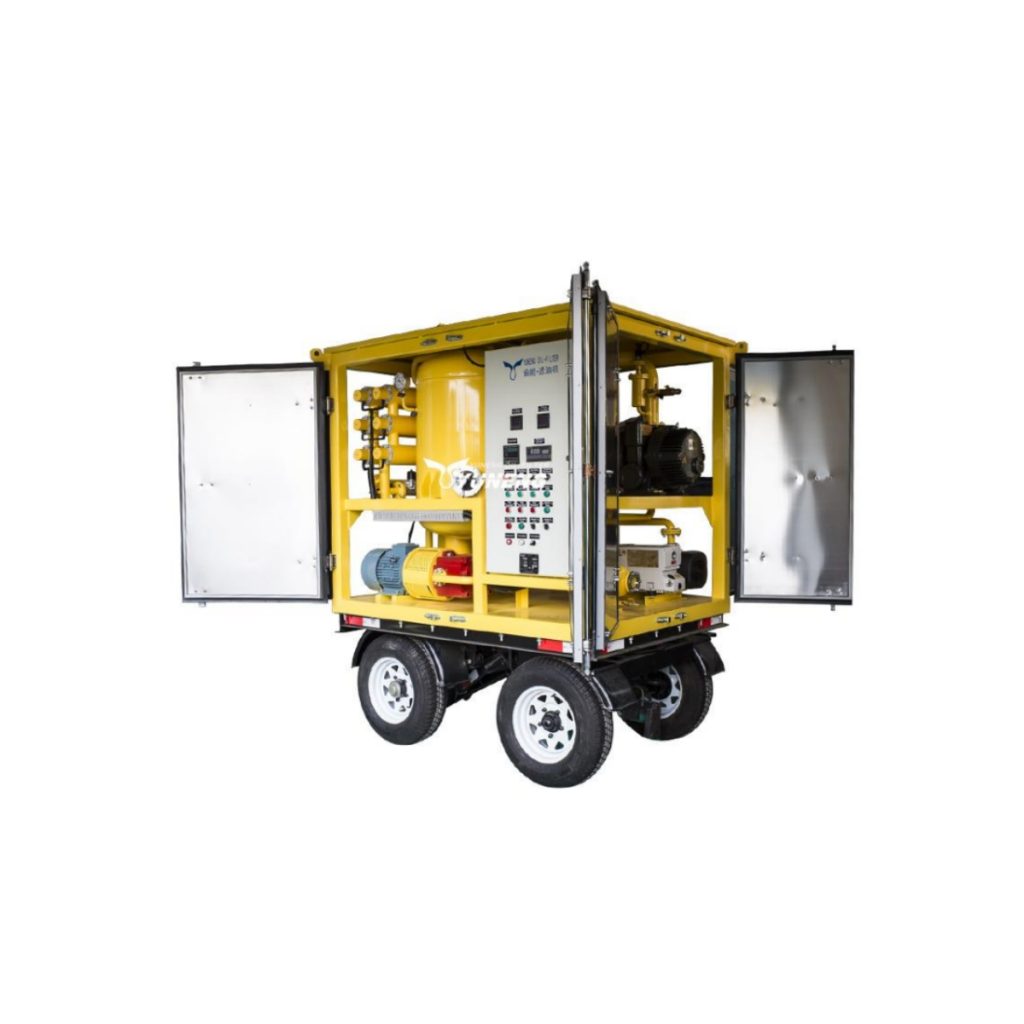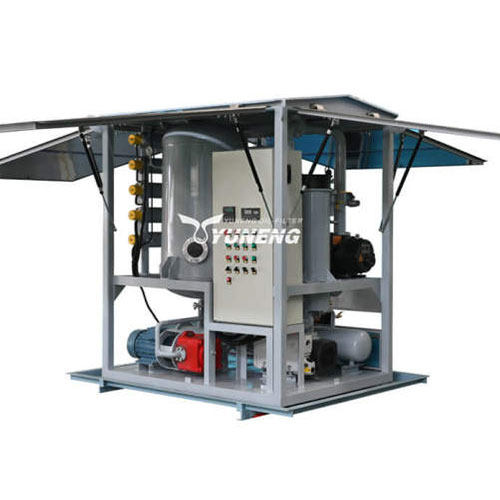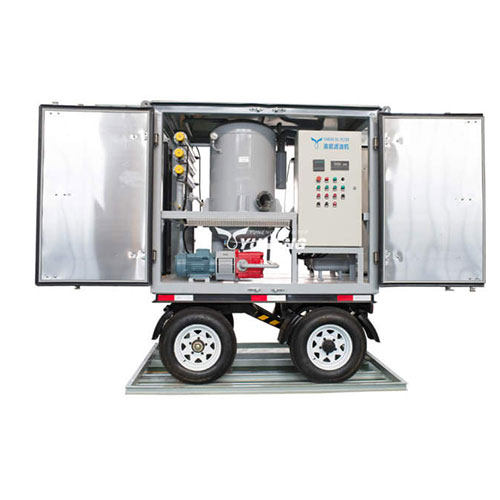Transformer Oil Purifiers and Their Supporting Equipment in Power Systems
Using transformer oil to cool and insulate transformers is imperative in power systems. Moisture, contaminants, and oil’s own acidity all become contaminants and degrade the oil’s quality. These contaminants undermine the oil’s insulating and cooling capabilities, which in turn can lead to flashovers and even explosions. In these situations, transformer oil purifiers use purifying systems to provide oil with physical means of restoring its quality and maintaining peak transformer performance. This article discusses the basic operations of transformer oil purifiers, reviews the necessary ancillary equipment they typically interface with, and discusses major considerations in using them successfully in power systems.
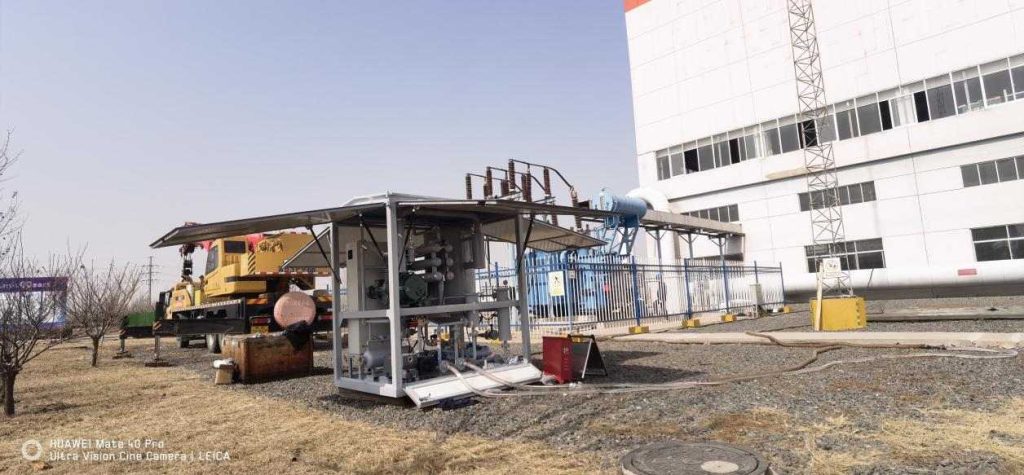
What are the Working Principles of Transformer Oil Purifiers?
To counter the constant aging of transformer oil and keep the fluid at peak performance, purpose-built purifiers rely on mechanisms engineered to fend off the main deteriorative effects. Coordinated physical approaches strip unwanted agents such as water, particulate matter, and reactive acidic species. The purification principles can be summarized as follows:
- Vacuum Dehydration: Within the unit, the pressure is lowered and kept constant, which creates a zone of low pressure. Under such conditions, oil-dissolved water is easier to vaporize. It boils and vaporizes at a lower temperature, and overloads the vapor phase and the circulating oil. Consequently, moisture contained in the oil is removed.
- Filtration: As the oil flows and passes through the stacked filter stages, the mesh of the filters becomes progressively finer. Each stage removes finer particulates from the oil, including grime, metal wear, and the by-products of the oil’s breakdown. These particulates are so small that the oil itself remains transparent, thereby maintaining the outgoing oil stream within the transformer low in particulate contaminants.
- Adsorption: In the inner part of the vessel, the flow is crossed by powdered activated clay or other analogous absorptive substances arranged in partitions. The fillers have a broad surface and a large number of microstructured pores, which provide a “jumping surface” for preferential attraction for the complexes with excess acid ethers, which are continually being produced by the activity of the transformer and are slowly rising in concentration. These complexes can be purged or baked off during the periodic regeneration of the boiler, which refreshens that part of the tower by removing the contents to be regressed.
What are the Functions of Transformer Oil Purifiers?
Transformer Oil Purifiers are useful for these reasons during the cleaning techniques:
- Elimination of Water: Purifiers literally eliminate the water that causes the biggest single electrical fault that can happen with transformer oil. With free and dissolved water gone, the risk of transformer failure becomes far more remote.
- Elimination of Particulates: Solid contaminants. Not valves and electric circuits can slow down oil and take away from its protective barrier of insulation. Purifiers are designed to ensure oil remains free of these nefarious particulates.
- Acid Neutralization: A pur When the separator becomes a corrosive setup, the internal pieces are one of the first parts to go. Purifiers remove these from the oil, allowing the internal pieces of a transformer to last while the oil gets through its paces.
- Higher Dielectric Breakdown Voltage (BDV): Purified oil is more likely to pass the BDV test. BDV is done where oil is stressed and strained by electrical currents to the point where the oil breaks down. Purified oil is more likely to pass that.
- Increased Oil Flow: Contaminants are removed by purifiers, leading the oil to flow with less resistance, leading to more oil flow and better cooling of the transformer.
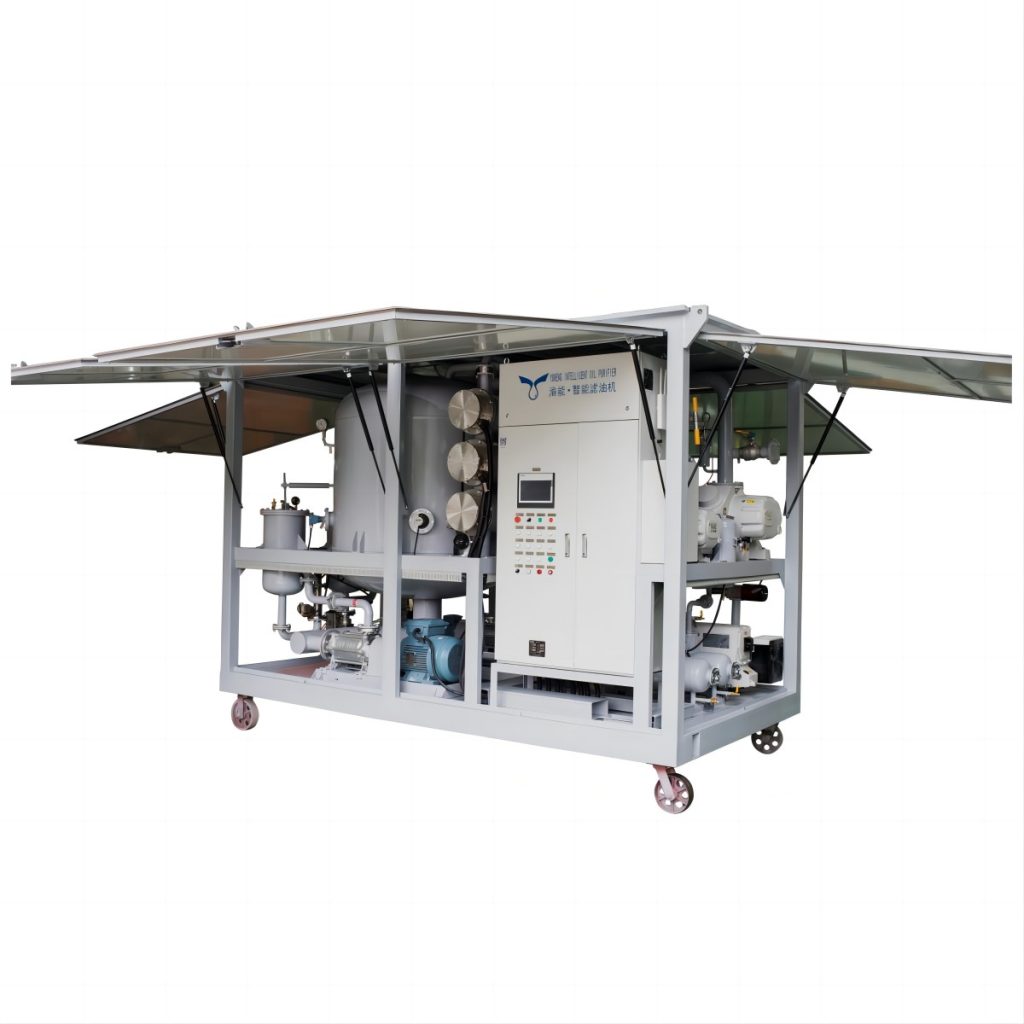
Supporting Equipment for Transformer Oil Purifiers
Along with transformer oil purifiers, some equipment is employed to serve supporting functions in maximizing the purification process and keeping maximum quality of oil. Some supporting equipment that is typically employed includes:
1. Vacuum Pumping Unit
In the whole vacuum dehydration process, the vacuum pumping unit stands out as the main part. It does relieve a lot of pressure from the chamber of the purifier, that significant. Lowering the pressure instantaneously lowers the boiling point of the transformer oil. For moisture trapped in the oil, the lowered boiling point facilitates more ease in coming, making the process of draining oil effortless.
There are vacuum pumps of various types. each type has a. unique operational characteristic, along with a specific application. Let’s discuss two of the more readily available types.
- Rotary Vane Pumps: Vane pumps are most useful where high pumping speeds are a requirement, especially in the lower vacuum attainment case scenario. They come in handy for the very first stages of dehydration, where velocity takes precedence.
- Roots Blowers: If the requirement is for ultra high vacuum levels, roots blowers are the ideal tools. They work best at the later stages of the dehydration process, where moisture streaks of a more stubborn nature need to be removed, and a vacuum space with higher strength is more desirable.
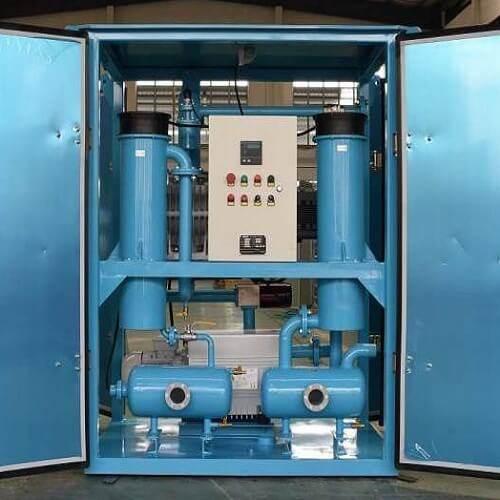
2. Dry Air Generator
Sometimes, transformer oil may require a further process to achieve very low moisture levels. This is where dry air generators come in. These generators produce virtually moisture-free air. This dry air is then applied in a purging process. During purging, dry air is passed through the oil, further stripping out any residual moisture that might still be present after the initial vacuum dehydration process. This second process is particularly helpful when dealing with very degraded oil or when the highest possible level of moisture removal is wanted.
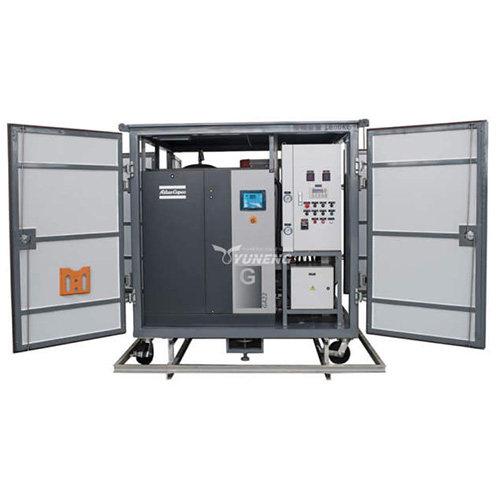
3. Transformer Oil BDV Tester
The transformer oil BDV tester is the most important equipment to determine the insulating characteristics of the oil. It measures the specific voltage level at which the oil is not able to perform as an insulator, and electrical breakdown occurs. This valuable reading is known as the breakdown voltage (BDV). Having a high BDV indicates that the oil will be capable of withstanding high voltage stresses within the transformer without compromising its insulating characteristics. Transformer oil purifiers attempt to raise the BDV of the oil quite significantly by removing impurities that have the effect of lowering its insulating strength. BDV values before and after purification, the effectiveness of the treatment can be directly assessed.
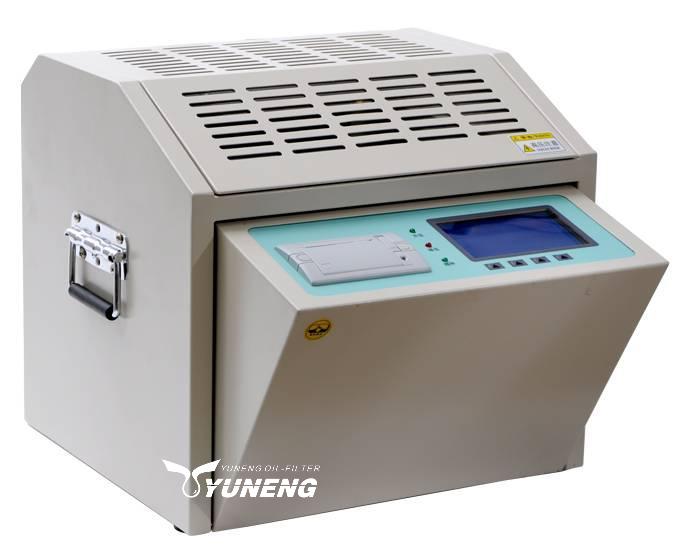
4. Oil Analysis Equipment
To achieve the best oil purification results, it’s essential to analyze the characteristics of the oil in advance and after processing. It’s performed on specialized equipment for oil analysis. These devices tend to find the most applicable parameters, telling us much about the condition of the oil, e.g.,
- Moisture Content: This measurement directly reads the amount of water that is present in the oil. A before-and-after purification comparison permits measuring the effectiveness of moisture elimination.
- Acid Value: It is a value that indicates that there are acidic degradation products in the oil. Acids are harmful to the insulating quality of the oil and cause further degradation. The reduction of acid value achieved through the purification process is aided by the equipment utilized for oil analysis.
- Interfacial Tension: This characteristic indicates the cohesive forces between oil molecules. Good interfacial tension is the indicator of a healthy oil, and it plays a key role in the lubricating and insulating properties of the oil. Examination of this parameter enables us to check whether purification has restored the best interfacial tension of the oil.
Through examination of these major parameters, oil analysis equipment yields essential information to assess the efficacy of the transformer oil purification process.
5. Control System
The modern control system of transformer oil purifiers has advanced automation technology to oversee oil purification unattended. With such an extensive control system, the oil purification is done automatically, concerning the type of oil being treated. Along with the control system, there are even more advanced pieces of equipment available, that, when pooled together, unleash the full potential of control, allowing the purification system to be monitored and controlled from a distance, which is very helpful for remote operators.
6. Waste Oil Handling Equipment
After purification, some of the transformer oil can be determined to be unfit for reuse in the transformer due to excess degradation. This “waste oil” needs to be specially handled and disposed of to minimize environmental hazards. Special waste oil handling equipment comes into the picture here.
- Oil Filtration Systems for Waste Oil: Based on the level of contamination, in certain instances, waste oil can undergo additional treatment by specialized filtration systems. They may employ filter elements with a smaller pore size to remove residual impurities that could not be addressed by the primary transformer oil purifier. This process may not always be feasible for severely degraded oil.
- Waste Oil Dehydration Systems: Similar to dehydration in the main purifier, independent dehydration systems can be used for waste oil. These can be designed for the removal of high water content found in very contaminated oil before final disposal.
- Oil Recycling Plants: Preferably, wherever possible, used oil is to be recycled by specialized plants. These plants employ advanced processing techniques to recover usable oil components, minimizing wastage and maximizing environmental sustainability.
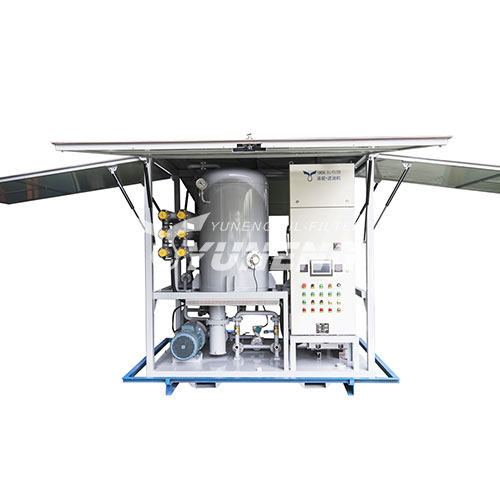
Considerations for Effective Transformer Oil Purification
The following factors are important in the purification of transformer oil and how they affect the functionality of the transformer:
- Selecting a transformer oil purifier: Choose the right size and capacity. These factors include: volume of transformer oil and its flow rate, the degree of oil contamination.
- Pre-filtration: In cases where the oil is extremely dirty, a pre-filtration process can be beneficial. Pre-filtration protects the primary filter, which improves the overall treatment process.
- Oil sampling and analysis: Regular sampling and analysis of the oil is a procedure that needs to be undertaken. Monitoring oil quality trends regularly helps to devise maintenance plans and perform oil purification before degradation.
- Operational procedures: In the transformer oil purification, following the documented and well-defined operational procedures is the utmost important. Effectiveness and productivity of the procedure are highlighted after the safety of the oil is ensured.
- Environmental regulations: In the management of waste oil, compliance with environmental regulations is required. This aids in the management of waste oil and reducing waste oil’s adverse impacts on the environment.
Conclusion
Transformer oil purifiers form a core component of preventative maintenance procedures in power grids. By eliminating contaminants and recovering the insulation characteristics of transformer oil, they help transformers run both reliably and safely. Ancillary equipment such as vacuum pump sets, dry air plants, and transformer oil BDV testers complements the purification process. Proper management of waste oil through filtration systems, dehydration systems, and cooperation with properly licensed waste disposal contractors is equally important to preserving environmental health. Through the use of such practices, power system operators can achieve maximum transformer oil management to provide for long-term transformer health and reliability.

